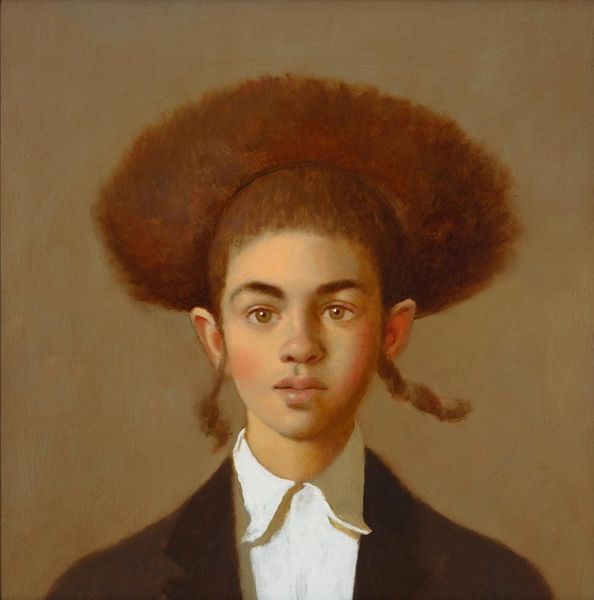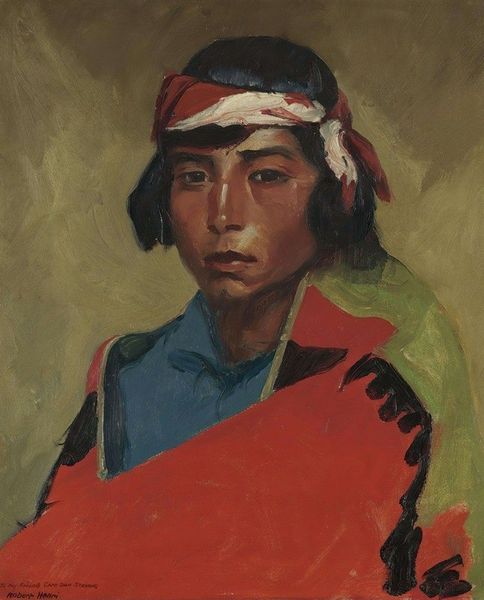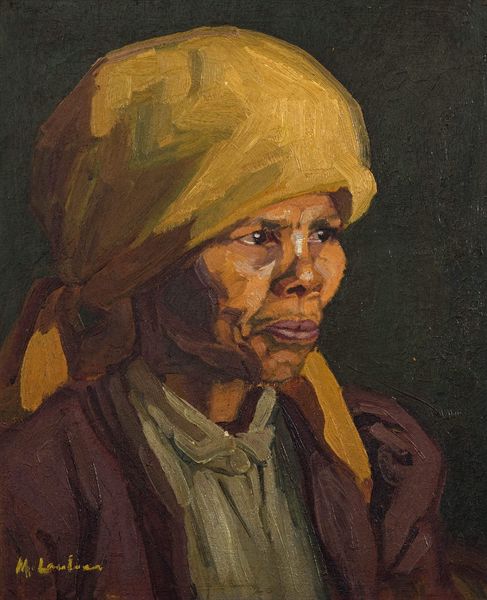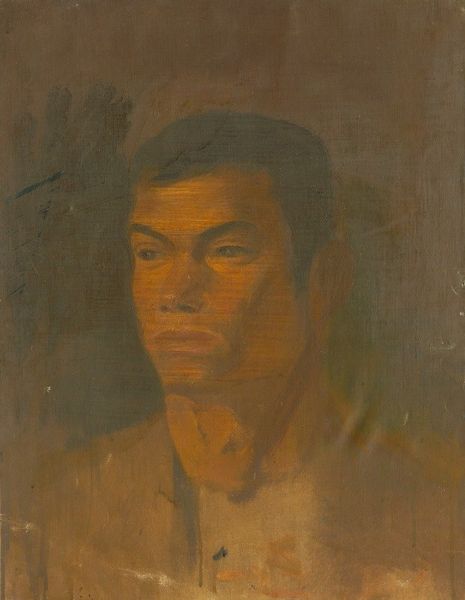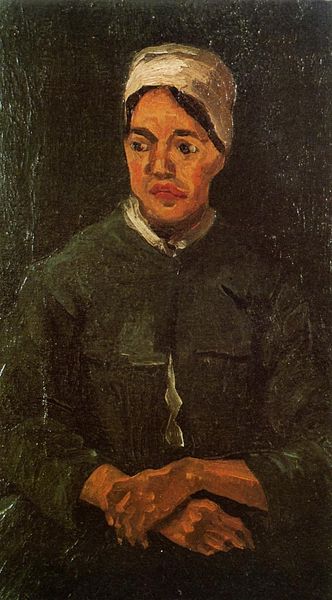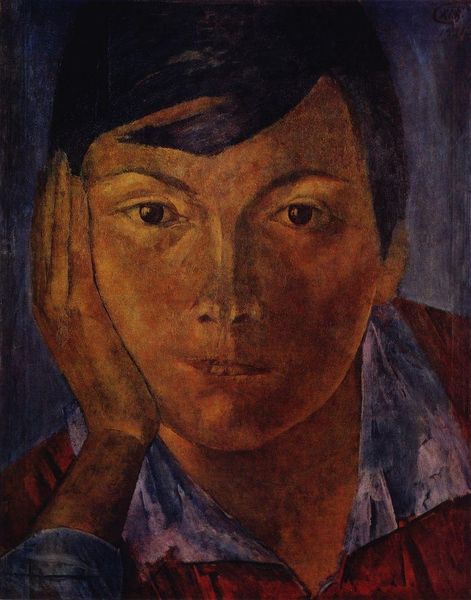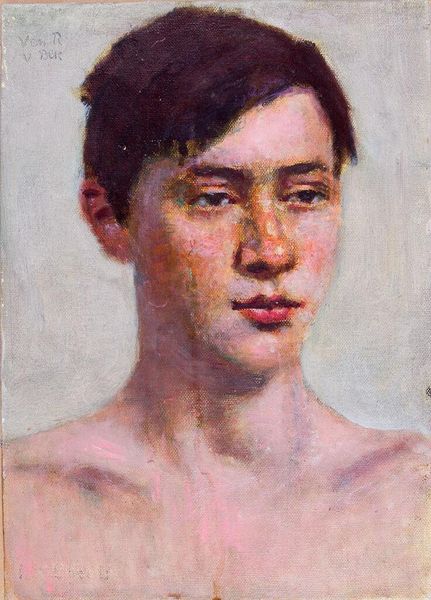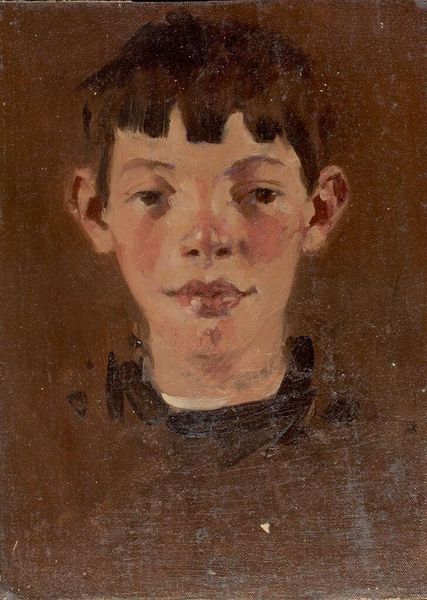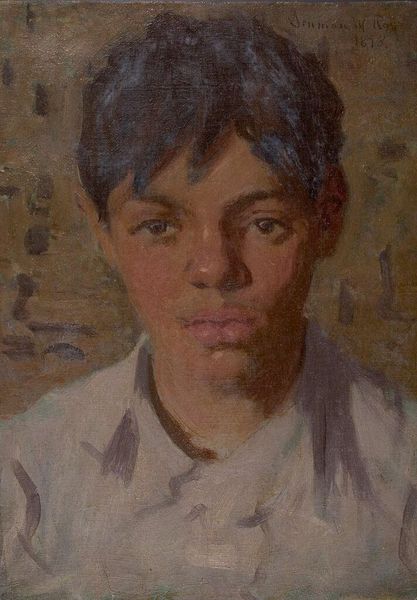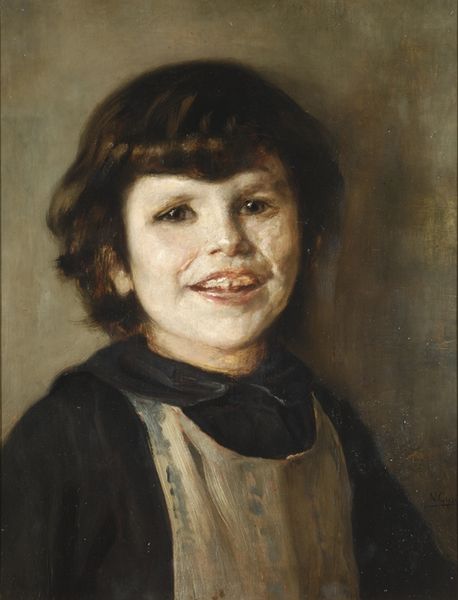
painting, oil-paint
#
portrait
#
portrait
#
painting
#
impressionism
#
oil-paint
#
academic-art
#
realism
Copyright: Public domain
Editor: Here we have Joan Brull’s "Head of a Young Beggar," painted around 1890 using oil paint. There's something very immediate about it. The texture of his jacket really stands out. What do you see in this piece? Curator: Well, immediately, I’m drawn to the materiality of it. Consider the cheapness of the clothing implied by its thick, rough texture, juxtaposed against the luxuriousness of oil paint, traditionally a medium of the elite. Brull is making a statement here. Editor: A statement about… what, exactly? Curator: The act of painting a beggar with oil-paint, we're automatically asking: who consumes images like these? Who is afforded dignity? What labor is involved in each stage, from begging in the street to the mixing and application of paint? How does painting this subject matter elevate or exploit him? Editor: So, it's less about the beggar himself and more about the circumstances of how he is painted. Curator: Precisely. The artistic act itself is implicated in a network of power and economics. Notice how Brull hasn't romanticized the boy – we see the evidence of his poverty in his clothing. This is less about an idealized view of youth and more about the brutal realities of late 19th-century life. Consider where and how the final product might be displayed. Whose gaze does this painting fulfill? Editor: That's given me a lot to think about, specifically the way materials contribute to meaning. Thank you for sharing. Curator: My pleasure. Art reveals so much when we consider its physical and social origins.
Comments
No comments
Be the first to comment and join the conversation on the ultimate creative platform.
